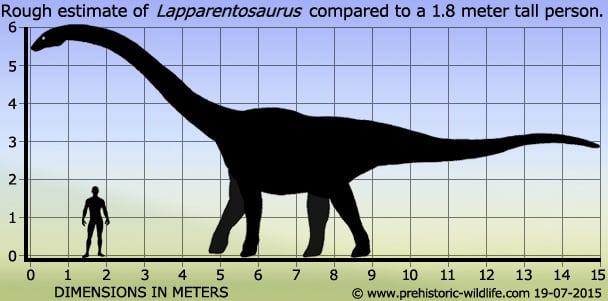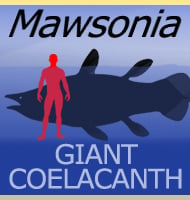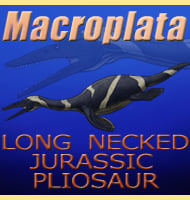In Depth
The type fossil material was originally assigned to the sauropod genus Bothriospondylus. However, not only is Bothriospondylus considered a dubious genus of sauropod because of the lack of identifiable features upon the type material, but the type material came from England, a long way from Madagascar. For this reason the palaeontologist Jose Bonaparte renamed the Madagascan material as a new genus; Lapparentosaurus.
Lapparentosaurus is represented by several individuals, though the exact number is hard to determine. However, the individuals that do represent Lapparentosaurus are of different growth stages, allowing palaeontologists to get an idea of how Lapparentosaurus grew to adulthood. There is some uncertainty about whether Lapparentosaurus was a primitive member of the macronarian sauropods or a distinct brachiosaurid. Cladistic analysis has supported the idea Lapparentosaurus was a primitive macronarian, and this also ties in to the appearance of Lapparentosaurus in the Bathonian stage of the Jurassic, roughly where we would expect primitive macronarian sauropods to be. Brachiosaurids however, while still classed as macronarians themselves, are more advanced in form and do not become common until the late Jurassic (going by brachiosaurid fossil appearances in the fossil record).
Further Reading
- On bones of a sauropodous dinosaur from Madagascar. - Quarterly Journal of the Geological Society of London 51: 329-336. - R. Lydekker - 1895. The early radiation and phylogenetic relationships of the Jurassic sauropod dinosaurs, based on vertebral anatomy. The Beginning of the Age of Dinosaurs: Faunal Change Across the Triassic–Jurassic Boundary. - Cambridge University Press, Cambridge 247-258. - Jose F. Bonaparte - 1986. - Analyse pal�ohistologique d’une s�rie de croissance partielle chez Lapparentosaurus madagascariensis (Jurassique Moyen): essai sur la dynamique de croissance d’un dinosaure sauropode. - Annales de Pal�ontologie 81: 49–86 - F. Rimblot-Baly, A. de Ricql�s, & L. Zylberberg - 1995.










